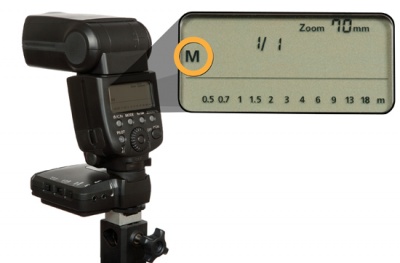Difference between revisions of "Manual Flash"
| Line 1: | Line 1: | ||
{{recommended reading|HyperSync|}} | {{recommended reading|HyperSync|}} | ||
| + | __TOC__ | ||
| + | |||
A transmitting MiniTT1 or FlexTT5 can trigger any receiving PocketWizard, including flashes with built-in PocketWizards. They can transmit on any of the 32 PocketWizard Standard Channels and a receiving FlexTT5 can be used with MultiMAX zones. You can even trigger E-TTL and manual flashes together. | A transmitting MiniTT1 or FlexTT5 can trigger any receiving PocketWizard, including flashes with built-in PocketWizards. They can transmit on any of the 32 PocketWizard Standard Channels and a receiving FlexTT5 can be used with MultiMAX zones. You can even trigger E-TTL and manual flashes together. | ||
| Line 12: | Line 14: | ||
| − | If you’re using a PocketWizard Plus, Plus II, | + | If you’re using a PocketWizard Plus, [[Plus II]], [[MultiMAX]], or [http://www.sekonic.com/ Sekonic Meter]as a transmitter, be sure to set the FlexTT5 to receive on a Standard Channel via [[Misc_Tab#Basic_Trigger|Basic Trigger Mode]]. This can be set in the [[PocketWizard Utility]], under the [[Misc Tab]] while shooting on-location via Learn Mode. See the tutorial on [[Learn Mode]] here. |
| − | |||
'''Note:''' Do not connect a flash to the camera port (P1) on a FlexTT5. You could damage your radio. This port is for triggering Canon motor drives only and isn’t designed for the trigger voltages used by some flashes. | '''Note:''' Do not connect a flash to the camera port (P1) on a FlexTT5. You could damage your radio. This port is for triggering Canon motor drives only and isn’t designed for the trigger voltages used by some flashes. | ||
Revision as of 14:05, 31 August 2011
| Next recommended reading: HyperSync |
Contents
A transmitting MiniTT1 or FlexTT5 can trigger any receiving PocketWizard, including flashes with built-in PocketWizards. They can transmit on any of the 32 PocketWizard Standard Channels and a receiving FlexTT5 can be used with MultiMAX zones. You can even trigger E-TTL and manual flashes together.
Triggering Hot Shoe Flashes Manually
Slide a Speedlite or other manual flash into the top shoe of a FlexTT5 for manual triggering without cords. You can also use a manual flash in the top shoe of an on-camera MiniTT1 or FlexTT5. No configuration of the radio is necessary.
Triggering Studio Strobes
You can use a receiving FlexTT5 to trigger studio strobes. Use our Cable Finder to find the right cable for lots of different strobes.
If you’re using a PocketWizard Plus, Plus II, MultiMAX, or Sekonic Meteras a transmitter, be sure to set the FlexTT5 to receive on a Standard Channel via Basic Trigger Mode. This can be set in the PocketWizard Utility, under the Misc Tab while shooting on-location via Learn Mode. See the tutorial on Learn Mode here.
Note: Do not connect a flash to the camera port (P1) on a FlexTT5. You could damage your radio. This port is for triggering Canon motor drives only and isn’t designed for the trigger voltages used by some flashes.
Remote Manual Flash Control from Camera Position
You can use a 580EX II, SB-700, SB-800, SB-900, SU-800, or AC3 ZoneController attached to the PocketWizard on your camera to control manual power levels of compatible flashes connected to ControlTL receivers. The on-camera PocketWizard will communicate with the device in its top shoe and transmit power level changes to remote ControlTL receivers automatically.
